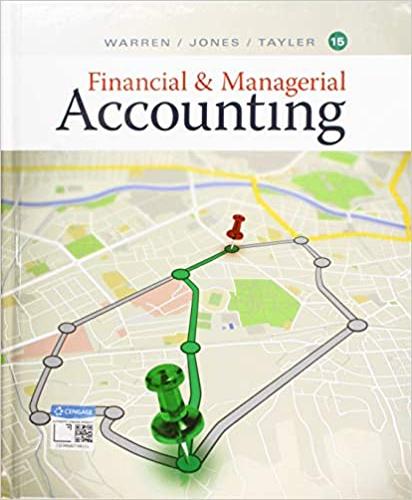Question
Set-up: Country A and Country B are engaged in free and costless trade in two goods, Sugar and Honey. Labor is the only factor of
Set-up: Country A and Country B are engaged in free and costless trade in two goods, Sugar and Honey. Labor is the only factor of production. All other assumptions of the Ricardian model apply. Technology: The unit labor requirements for both goods in both countries are given by the table:
| COUNTRY A | COUNTRY B | |
| Sugar | 2 | 6 |
| Honey | 10 | 20 |
Resources: Initially Country A has LA =3000 workers and Country B has LB =5000 workers. One worker is one unit of labor. Demand: The World Relative Demand of sugar relative to honey is given by the formula: QS / QH = 16 - 40 (Ps / PH) where QS is the quantity demanded of sugar, Ps is the price of sugar, etc. Notation: please use consistently superscripts for country labels (if needed), and subscripts for good labels. For example, aALS means the unit labor input for sugar in Country A, and aBLH is the unit labor input for honey in Country B. Analogously, QAS is the quantity of sugar supplied or demanded in Country A, while QBS is the quantity of sugar supplied or demanded in Country B, etc.
1. (8 points) Draw the Relative Demand and the Relative Supply curves in a single graph. Consistent with the choice above, always place the quantity of sugar and the price of sugar in the numerators of the relative quantities and the relative price, and the quantity of honey and the price of honey in the denominators. To be complete, your graph must include: axes labels; curve labels; and all relevant numbers that are needed to know where any intersects are, and what are the heights and lengths of any steps. You must also show your work to get the numeric labels. (Hint: the only new thing is the Relative Demand curve. Just note that it's the equation for a straight line, and also note that QS / QH is the variable on the horizontal (or, if you prefer, x-) axis, and Ps /PH is the variable on the vertical (y-) axis. Look at your axes labels!)
2. (6 points) Prove that the two countries are both specialized in one good. This is a mathematical proof, not a graphical one. You may use your figure as an illustration, but not as part of the proof. (To be clear, here's an example of a mathematical proof that uses a figure as illustration, but not as part of the proof: "If supply is Qs =100+P and demand is QD = 400P, the market equilibrium is when supply equals demand, therefore QD = QS, or 100 + P = 400 P 2P = 300 P =150 Q = 250. This is shown in the figure as the point where supply crosses demand." Note that a figure (not shown here) was used as illustration, but nothing was read off the figure as part of the proof. This is the kind of proof asked in this question. A graphical proof would say something like "as can be read off of the grid of the figure, P=150 and Q =250." This kind of proof is not what is being asked in this question.)
3. (6 points) Allow Country A's labor force to grow so large that it stops gaining from trade. Calculate exactly how large LA needs to be, for the country to stop gaining from trade. Your answer needs to be an actual number, let's call it L*, such that if LA < L*, then Country A gains when it trades with Country B, and if LA L*, then Country A does not gain when it trades with Country B. What is the number L*? Sow your work.
4. (3 points) Discuss: As Country A's labor force grows from LA =3000 up to L* (the answer to question 5), do Country B's gains from trade go down, remain the same, or increase? Note: the comparison in this and the next question is not whether Country B gains from trade (which compares its autarky with free trade with Country A). The comparison is as follows: 1) We know Country B gains from trade; 2) Allow LA to increase. How do Country B's gains from trade change?
5. (2 points) Discuss: As Country A's labor force grows above L* (the answer to question 5), do Country B's gains from trade go down, remain the same, or increase?
Step by Step Solution
There are 3 Steps involved in it
Step: 1

Get Instant Access to Expert-Tailored Solutions
See step-by-step solutions with expert insights and AI powered tools for academic success
Step: 2

Step: 3

Ace Your Homework with AI
Get the answers you need in no time with our AI-driven, step-by-step assistance
Get Started


